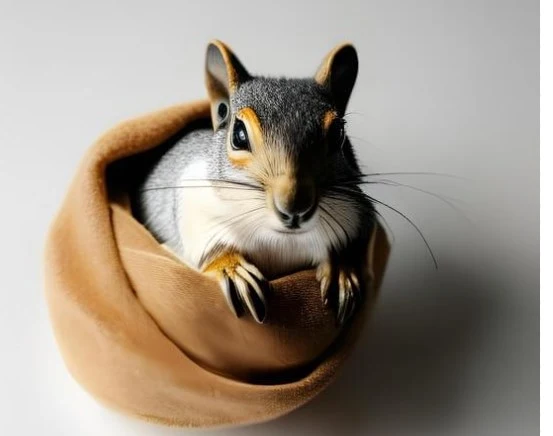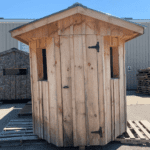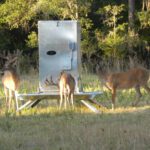Squirrels walnuts go together like peanut butter and jelly! You might have seen squirrels scampering up trees with big, round walnuts in their mouths. But did you know that squirrels don’t just love to eat walnuts – they also help spread them around the forest!
When fall arrives, walnut trees start dropping their fruits onto the ground. Squirrels quickly gather up as many walnuts as they can carry, filling their cheeks until they bulge out like balloons! They take the nuts back to their homes or stash them away in hidden spots for winter food. As squirrels move around the forest, some of these walnuts are forgotten or left behind. This is actually good news for the walnut tree because those forgotten nuts have a chance to grow into new trees!
The Relationship Between Squirrels And Walnuts
Squirrels are fascinating creatures that can be found in many parts of the world. They are known for their love of acorns, nuts and seeds which they store in various places to eat later on. One nut that is especially important to squirrels is the nutrient rich walnut.
Squirrel behavior around walnuts can vary depending on the time of year. During fall months when walnuts start falling from trees, you might see squirrels frantically gathering as many walnuts as possible before winter sets in. Squirrels have a keen sense of smell and will often bury or hide walnuts in different locations so they can find them later.
Walnuts provide many essential nutrients for squirrels such as protein, fiber and healthy fats. These nutrients help keep squirrels healthy throughout the year by providing energy and supporting their immune system. As a result, it’s no wonder why squirrels go through such great lengths to gather these delicious treats!
The Importance Of Walnuts For Squirrels
As we learned in the previous section, squirrels and walnuts have a unique relationship. Squirrels love to eat walnuts because they are delicious! But did you know that walnuts are also very important for squirrels’ survival? Let’s talk about why!
Firstly, walnut nutrition is essential for squirrels. Walnuts contain healthy fats and proteins that help keep squirrels strong and energized. This is especially important during the winter months when food is scarce. Without enough nutritious food, squirrels may not survive the harsh winter weather.
Secondly, squirrels hoard walnuts for the winter. They gather as many nuts as possible during the fall months when they are abundant. Then, they store them away in their nests or underground burrows to eat later on. This helps ensure that they have enough food to last throughout the winter season.
In summary, it’s clear that walnuts are extremely important for squirrel survival. Not only do they provide necessary nutrients but also serve as an important source of food during colder months. In our next section, we will discuss how exactly squirrels go about gathering walnuts for winter storage.
Gathering Walnuts For Winter
- First, to find walnut trees, look for trees with long, oval-shaped leaves that turn yellow in the fall.
- Walnuts are ready to pick when they are dark brown and the husk is dried up.
- You can shake the tree gently to see if the walnuts fall off.
- Once you’ve collected the walnuts, you’ll need to crack them open to get to the tasty nut inside!

Identifying Walnut Trees – Squirrels Walnuts
If you want to gather walnuts for winter, it’s important to know how to identify walnut trees. Tree ID is key when looking for the best quality nuts. One way to tell if a tree is a walnut tree is by its leaves: they have many leaflets and are often shaped like feathers. Walnut trees also tend to grow in well-drained soil with plenty of sunlight.
In addition to knowing what a walnut tree looks like, understanding their nutrient requirements can help ensure you’re collecting the healthiest walnuts possible. These trees need ample water and nutrients from the soil, so it’s essential that they are planted in an area where these resources are available. When gathering walnuts, look for those that are plump and heavy with oil-rich flesh – this indicates high levels of healthy fats and other beneficial nutrients.
By taking the time to learn about identifying walnut trees and their nutrient requirements, you’ll be able to collect the highest-quality walnuts possible for your winter stash. Remember: always wear gloves when handling fresh walnuts, as they can stain your skin!
Selecting The Ripe Walnuts
Now that we know how to identify walnut trees and understand their nutrient requirements, it’s time to talk about selecting the ripe walnuts. Identifying signs of a ripe walnut can be tricky, but there are some techniques you can use to ensure you’re picking the best ones. First, look for nuts that have fallen off the tree by themselves – these are often fully matured and ready for harvesting. You can also gently tap on the outer shell with your fingers – if it sounds hollow or empty, then the nut inside is likely dried out and not ideal for consumption.
Another important factor in selecting ripe walnuts is timing. Generally speaking, walnuts are harvested in autumn when they start falling from the tree naturally. However, this timeline may vary depending on where you live and the weather conditions in your area. If you notice that many of the walnuts on your tree are still green or unripe, wait another week or two before checking again. Patience is key when gathering walnuts!
When harvesting walnuts, it’s important to handle them carefully to avoid damaging them or causing bruising. Use gloves when handling fresh nuts and try not to drop them onto hard surfaces like concrete or pavement as this could cause cracks in the shells. With these tips in mind, you’ll be able to select and gather perfectly ripe walnuts for yourself and your loved ones all winter long!
Storing Walnuts For Later
Do you ever find yourself with an abundance of walnuts but not enough time to eat them all? Fear not! With a little bit of effort, you can preserve their freshness and enjoy them for months to come.
Preserving freshness is key when storing walnuts. First, make sure the nuts are completely dry before putting them in storage. Moisture will cause mold and spoilage. Secondly, store walnuts in an airtight container such as a mason jar or plastic bag. This prevents air from entering and causing the nuts to go rancid.
There are also many DIY storage solutions that you can use to keep your walnuts fresh. One popular method involves freezing the nuts in an airtight container or freezer bag. Another option is to vacuum seal the walnuts using a food saver machine. Whatever method you choose, just remember to keep them cool and dry.
- Store walnuts in an airtight container
- Make sure they are completely dry
- Keep them cool
- Freeze or vacuum seal for long-term storage
- Use DIY storage solutions
Next up: Have you ever wondered about the role squirrels play in spreading walnuts?
The Role Of Squirrels In Spreading Walnuts
Squirrels play an important role in the ecosystem by helping to spread walnut trees. These little critters are known for their love of walnuts, and they will do just about anything to get their paws on them.
Squirrel behavior is fascinating to watch. They have a natural instinct to hoard food, especially during the winter months when resources can be scarce. When squirrels bury nuts like walnuts, they actually help with seed dispersal because those nuts may eventually sprout into new trees.
This process benefits not only the squirrels but also the environment as it helps maintain biodiversity. Without squirrels spreading the seeds of these valuable nut-producing trees, we might see fewer and fewer of them over time. So next time you spot a squirrel scurrying around with a walnut in its mouth, remember that it’s doing more than just finding a snack – it’s playing an important role in nature!
The Life Cycle Of A Walnut Tree
Squirrels play an important role in spreading walnuts. They collect the nuts and bury them in various locations, often forgetting where they have buried them. This forgetfulness results in new trees sprouting up in unexpected places.
The life cycle of a walnut tree begins with a seedling emerging from the ground. Over time, it grows into a sapling and then a mature tree capable of producing its own nuts. The growth stages are affected by environmental factors such as temperature, moisture levels, and soil quality.
To ensure healthy growth, walnut trees require proper care and attention at each stage of their development. Here are four key steps to follow:
- Plant the seed or sapling in well-draining soil.
- Water regularly but avoid over-watering.
- Fertilize annually to provide necessary nutrients.
- Prune branches selectively to promote strong growth.
By following these steps and monitoring environmental conditions, one can help cultivate healthy walnut trees that benefit both wildlife and humans alike.
As walnut trees grow, they provide numerous benefits for the ecosystem around them. These include providing shade for other plants to thrive beneath them, improving air quality through photosynthesis, and supporting animal habitats with food sources and shelter options. It is clear that cultivating healthy walnut trees is not only beneficial for individual gardeners or farmers but also has positive impacts on local ecosystems as a whole.

The Benefits Of Walnut Trees For The Ecosystem
Walnut farming is an important aspect of the ecosystem. These trees grow up to 100 feet tall and can live for over 200 years! They provide a habitat for many animals, including squirrels who rely on them as a food source.
Nutritional benefits are not only limited to humans but also animals. Walnuts contain high levels of protein, fiber, vitamins, and minerals that are essential for animal health. In addition, they contain omega-3 fatty acids which help reduce inflammation in animals’ bodies.
The role of walnut trees extends beyond their nutritional benefits. They have been found to improve soil quality by increasing its organic matter content. This allows other plants to grow better and provides homes for various organisms like earthworms that play crucial roles in the ecosystem’s functioning. By supporting walnut tree cultivation practices, we can ensure these environmental benefits continue for future generations.
Table:
| Nutrient | Amount per 1 oz serving |
|---|---|
| Protein | 4 gram |
| Serat | 2 gram |
| Vitamin E | 0,2 miligram |
| Magnesium | 45 miligram |
As you can see from the table above, walnuts pack quite a punch when it comes to nutrition. It’s clear why squirrels love them so much! But let’s not forget about the impact they have on our environment too – supporting walnut farming means contributing positively to soil quality and providing habitats for wildlife.
Transition: Now that we understand more about how important individual tree species are within ecosystems, let’s take a closer look at the fascinating world of forest interactions.
The Fascinating World Of Forest Interactions
Have you ever noticed how squirrels are always busy collecting walnuts during the fall season? Squirrels do this so they can survive through winter when food is scarce. They have developed unique nut hoarding strategies that help them store and retrieve their food efficiently.
But did you know that squirrels’ nut hoarding also plays a crucial role in forest symbiosis? As squirrels bury their nuts, they unintentionally help plants grow by dispersing seeds throughout the forest floor. This helps to maintain an ecosystem balance where different species depend on one another for survival.
In addition to helping other plants grow, squirrel activities also benefit trees by promoting seed germination and diversity in tree populations. This fascinating world of forest interactions highlights just how important it is for us to protect our forests and preserve these delicate relationships between animals and plants.
Frequently Asked Questions
What Other Types Of Food Do Squirrels Eat Besides Walnuts?
Squirrels are fascinating creatures with many types of food habits. They have a varied diet that includes nuts, fruits, seeds, insects and even small animals such as birds and rodents. Their nutrition is important for their survival in the wild, and they have adapted to eat whatever food sources are available to them. Squirrels also have unique behaviours when it comes to storing food for winter months or times of scarcity. They will gather and store large amounts of food in hidden locations around their territory so they can access it later on. Overall, squirrels are opportunistic eaters who rely on their instincts and natural environment to find sustenance throughout the year.
How Long Do Squirrels Live On Average -Squirrels Walnuts?
Squirrels are fascinating animals that live in many different habitats. They can be found in forests, parks, and even cities! On average, squirrels have a lifespan of about 5-10 years depending on their habitat preferences. Some species, like the gray squirrel or red squirrel, may live up to 12 years in ideal conditions. It’s important to remember that not all squirrels eat walnuts – they also enjoy acorns, berries, and seeds from trees. So next time you see a squirrel scampering around your backyard, take a moment to appreciate how long they might live and what other foods they might be enjoying besides walnuts!
Can Squirrels Get Sick From Eating Too Many Walnuts?
Squirrels can get sick if they eat too many walnuts. Eating too many nuts can cause digestive problems for squirrels, which can lead to health issues. It’s important for squirrels to have a balanced diet that includes more than just one type of food. While it may be tempting for them to eat all the delicious walnuts they find, they should only consume them in moderation to keep their bodies healthy and happy!
What Are Some Other Animals That Rely On Walnut Trees For Survival?
Did you know that many different animals rely on walnut trees for their survival? Wildlife conservation is important to make sure these creatures have a home. Without ecosystem diversity, we could lose valuable species like the black bear, blue jay, and even the monarch butterfly. These animals depend on walnuts as a food source or shelter in some way. It’s amazing how much of an impact one type of tree can have on so many different parts of nature!
How Do Humans Use Walnuts Compared To Squirrels?
Humans and squirrels both have a use for walnuts, but they use them in different ways. Squirrels rely on walnut trees for their survival because they store the nuts for winter when food is scarce. They also crack open the hard shells with their sharp teeth to access the nutritious kernels inside. Humans enjoy eating walnuts too, but we usually buy them already shelled from grocery stores. We eat them as snacks or add them to recipes like salads, baked goods, and trail mix. Walnuts are a good source of protein, fiber, healthy fats, vitamins, and minerals that our bodies need to stay healthy.
Conclusion
In conclusion, squirrels love to eat walnuts but they also enjoy a variety of other foods such as acorns, pine cones, and seeds. They can live up to 8 years in the wild and even longer in captivity. However, eating too many walnuts can cause health problems for these furry critters.
Other animals that rely on walnut trees include birds like woodpeckers and nuthatches who use the tree’s bark to create homes. Humans also use walnuts but in different ways than squirrels. We eat them raw or roasted, bake them into cakes and cookies, and make oil from their kernels. Overall, we all love walnuts but it’s important to remember that everything should be enjoyed in moderation!




